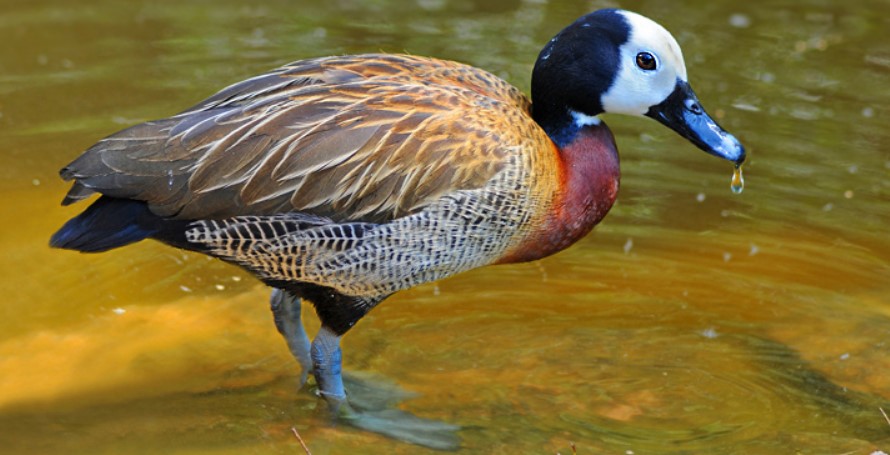White-faced Whistling Duck

Scientific Name
Dendrocygna viduata
Alternative Names
White-faced Tree Duck, Irere, Guiriri
Measurements
| Feature | Male & Female |
|---|---|
| Length | 38–48 cm (15–19 in) |
| Weight | 700–1,000 g (1.5–2.2 lb) |
| Wingspan | About 75–85 cm (30–33 in) |
Status
A common species found across two continents—Africa and South America. Classified as Least Concern due to its large population and wide range.
Identification
A medium-sized duck with a slim neck, grey bill, and long legs. The head and neck are black, but the face is bright white—this makes it easy to recognize. The chest is chestnut-colored, and the body is dark brown to black with fine white stripes on the flanks. Males and females look alike. Young birds are duller with less white on the face.
Voice
Very vocal. Known for a loud, clear three-note whistle, especially when in flight or with the flock.
Diet
Feeds mostly on seeds and aquatic plants. Sometimes eats small invertebrates while dabbling or grazing in shallow water.
Distribution
Found in sub-Saharan Africa and much of South America. This unusual split distribution is thought to be due to natural movement and possibly human introduction.
Habitat
Prefers shallow freshwater wetlands, lakes, rice fields, and reservoirs with tall vegetation. Often seen feeding and resting in large groups near water.
Behaviour and Ecology
Highly social—can gather in flocks of hundreds or even thousands. Mostly stays in the same region year-round but may move locally in search of water and food.
Breeding
Nests on the ground or in thick reeds near water. Both parents incubate 6–12 white eggs for about 26–28 days. Ducklings are cared for by both parents and remain hidden in vegetation. They can fly after around 8 weeks.
Wintering
Mainly resident and does not migrate long distances, though it may travel locally during dry seasons.
Conservation
Protected under international agreements like AEWA. Populations are stable, but wetland loss and hunting could become threats in some areas.
